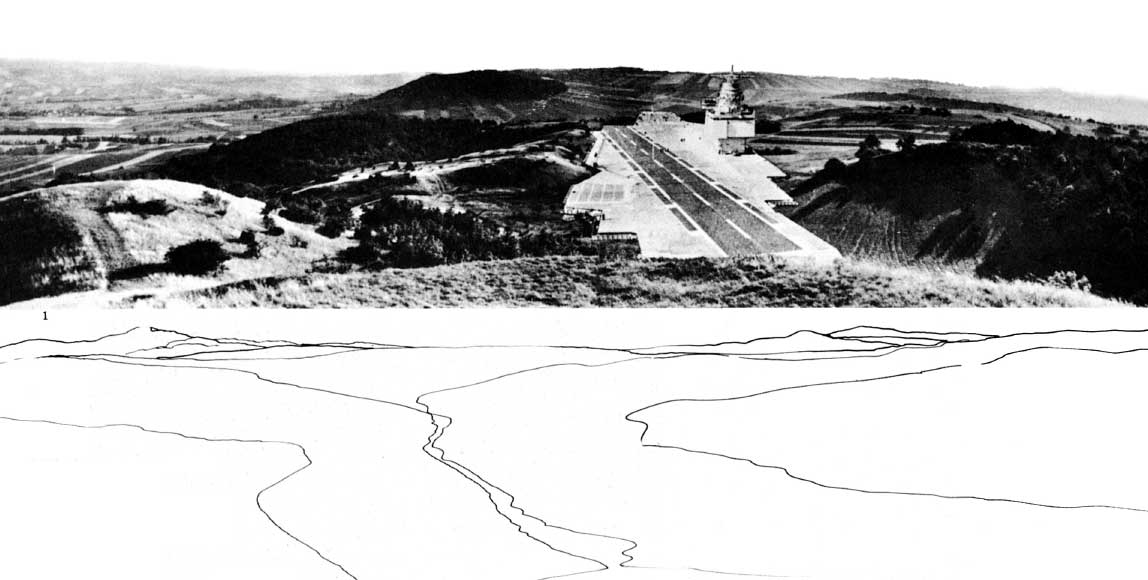Book – Infrastructure as Architecture
Infrastructure projects have grown into an important role in the public realm taking more and more responsibility in a social context. Over the past arguably hundred years more and more emphasis has be put in to infrastructure, being it transport services and facilities.
As a modernists take on the city technology was to be placed as the driving force behind planning and this of course shall also include infrastructural project. In fact especially here technology could be implemented with the help of additional arguments. Today, infrastructure is running as flag ship projects in many cases being put forward as statements both public and design wise.

Image taken from dpr-barcelona / Hans Hollein Aircraft carrier city in landscape, project. Aerial perspective.
The Jovis publication Infrastructure as Architecture: Designing Composite Networks, edited by Katrina Stoll and Scott Lloyd takes a detailed look at this position infrastructure has grown into and how architecture relates to it, thus implying that design has to learn from both in order to support a new take on projects.
The publication discusses the matter in essays organised in five topics. These are: Infrastructure Economy, Infrastructure Ecology, Infrastructure Culture, Infrastructure Politics and Infrastructure Space/Networks. Contributors include for example Dana Cuff from UCLA, LateralOffice, UrbanLAB, Alexander D’Hooghe and MVRDV.
The essays cover a range of topics and reach from the presentation of practical projects, built and planned to theoretical essays of the discussion. Thus there is a wealth of different views that are, as the editors argue: ‘providing a framework for understanding the union of infrastructure and architecture’.
Of course it is on one hand a secret claim to but architects in the position to take on and reclaim design agency over infrastructure projects, but more importantly to discuss the dualities of presence and identity of building projects regardless of their function.
It is superbly interesting how this publication argues for a new take on infrastructure and how the argumentation might actually be point out what practice has already incorporated. Whilst the discussions around the relationships infrastructure is bedded into in the urban system is not new, there is a new approach being argued for. Modernists have taken it on at the beginning of the last century and in the 60s the Smithsons and Team X proposed a new take. More and more it grew into a systemic approach and whilst before it was always one or the other it is now being argued for as both, one and the other.
Appleyard and Lynch in A view from the Road already note that the road is producing scenery for the driver and the passengers it is at the same time dominating the landscape as a static bulky object. Alexander D’Hoogh is especially arguing for this in his essay contribution o the publication: The Objectification of Infrastructure: The cultural project of suburban infrastructure design.
This dualism of producing and being is the new aspect in this publication, but probably could in fact reach beyond. Testing this against current trends might revel a deeper interest of our times in this dualism and the fact that problems could have more than one state.

Image taken from jonathandsolomon.com / Book cover. A preview of the publication is available from Jovis HERE. The Essay by Jonathan Solomon is available HERE.
Stoll, K. & Lloyd, S., 2010. Infrastructure as Architecture: Designing Composite Networks, Berlin: Jovis Verlag.
